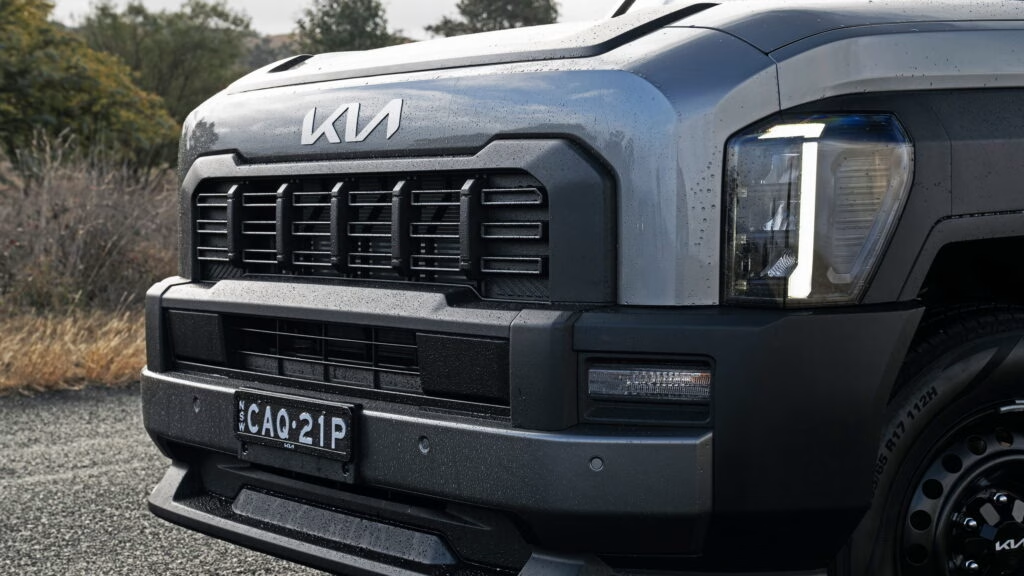What’s Driving Kia to Build a Rugged SUV Based on the Tasman Pickup?
Kia’s ambitions in the off-road world are picking up serious steam. The Tasman pickup, already making waves as Kia’s first midsize truck, is just the tip of the iceberg. Now, the company is actively considering a rugged SUV built on the same ladder-frame platform—a move that could put Kia head-to-head with established players like the Ford Everest, Toyota Fortuner, and Mitsubishi Pajero Sport.
So, what’s behind this push? For starters, the global appetite for tough, go-anywhere SUVs is growing. In markets like Australia, South Africa, and the Middle East, buyers want vehicles that can handle rough terrain, tow heavy loads, and still carry the family in comfort. Kia’s engineering team, led by Dong Hoon Kang, has confirmed that development studies for a Tasman-based SUV are underway. But there’s a catch: the project needs to make sense globally, not just in one or two regions. As Roland Rivero, Kia Australia’s head of product planning, put it, “It can’t just be Australia that’s strongly pushing for it… We’ll need the Middle East, we’ll need South Africa, we’ll need South America all on board wanting one as well.”
How Would a Tasman-Based SUV Stack Up Against Rivals?
Let’s get real: the competition in this segment is fierce. The Ford Everest and Toyota Fortuner have built loyal followings thanks to their proven off-road chops and family-friendly features. Kia’s challenge is to bring something fresh to the table without reinventing the wheel.
Early renderings suggest the Tasman SUV could sport a bold, polarizing design—think chunky wheel arches, a slightly shorter wheelbase than the pickup, and a three-row seating layout. That’s a recipe for versatility, appealing to both adventure seekers and growing families. And with Kia’s recent track record for packing in tech and comfort at a reasonable price, expectations are high.
But it’s not just about looks. The ladder-frame chassis means serious towing and payload capabilities, the kind you need for hauling boats, campers, or work gear. If Kia follows through with hybrid or electric powertrains down the line, as hinted by company insiders, it could also carve out a niche among eco-conscious adventurers—a segment that’s growing fast, according to a 2023 report from the International Energy Agency, which noted a 55% year-over-year increase in global EV SUV sales.
Will Kia’s Off-Road Expansion Go Beyond the Tasman?
Here’s where things get interesting. Kia isn’t stopping at just one SUV. Dong Hoon Kang has hinted at a broader family of ladder-frame vehicles, including more utes (pickups) and SUVs, and even electric variants. This signals a strategic shift for the brand, which has traditionally focused on crossovers and sedans.
For North America, Kia is already developing a separate midsize pickup, rumored to be fully electric and set to debut between 2026 and 2029. If that model spawns its own SUV sibling—think Rivian R1S to the R1T, but in a more accessible segment—Kia could quickly become a major player in the off-road and overlanding space.
This isn’t just speculation. The global SUV market is booming, with Statista projecting worldwide SUV sales to surpass 45 million units by 2025. Kia’s move to diversify its lineup is a calculated bet on this trend, aiming to capture buyers who want more than just a city-friendly crossover.
What Could Set the Tasman SUV Apart in a Crowded Field?
Kia’s ace in the hole might be its willingness to listen to local markets. Australian executives have been especially vocal in lobbying for the Tasman SUV, recognizing the region’s love affair with rugged, do-it-all vehicles. If Kia can deliver a product tailored to these demands—without pricing itself out of reach—it could win over buyers who might otherwise default to the usual suspects.
There’s also the promise of innovation. Kia’s recent models have impressed with their user-friendly infotainment, advanced safety tech, and value-packed trims. If the Tasman SUV follows suit, it could offer features like a panoramic sunroof, adaptive cruise control, or even a plug-in hybrid option—amenities that aren’t always standard in this segment.
And let’s not forget design. The speculative renderings floating around show a vehicle that’s not afraid to stand out. Love it or hate it, that kind of boldness gets people talking—and, more importantly, test driving.
What’s the Timeline and What Should Buyers Expect Next?
If Kia’s leadership gives the green light, the Tasman-based SUV could arrive sooner than you’d think. Development on the Tasman pickup started back in 2019, but with the platform already in place, the SUV’s timeline could be shorter. Industry insiders suggest a two- to three-year window is realistic, putting a potential launch somewhere in the mid-2020s.
In the meantime, Kia is also working on beefier versions of the Tasman pickup, including models aimed squarely at the Ford Ranger Raptor crowd. Hybrid and electric options are on the table, too, reflecting the brand’s commitment to both performance and sustainability.
The big takeaway? Kia’s push into rugged SUVs and pickups isn’t about perfection—it’s about smarter adjustments. Start with one change this week, and you’ll likely spot the difference by month’s end. Whether you’re a die-hard off-roader or just SUV-curious, keep an eye on Kia. The next wave of adventure-ready vehicles might just surprise you.

